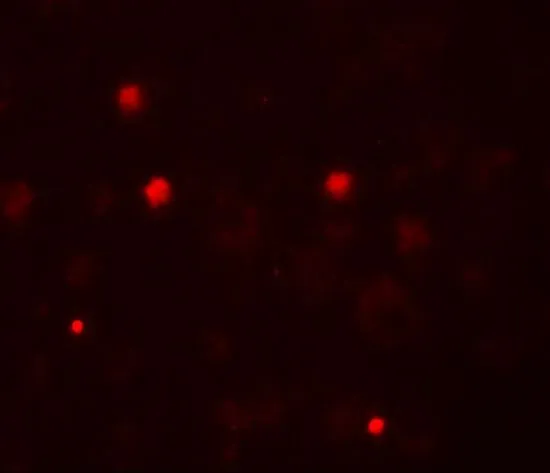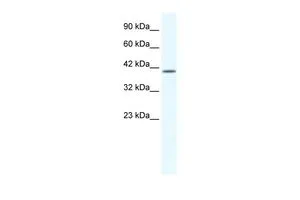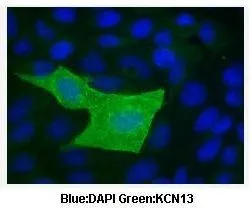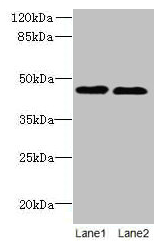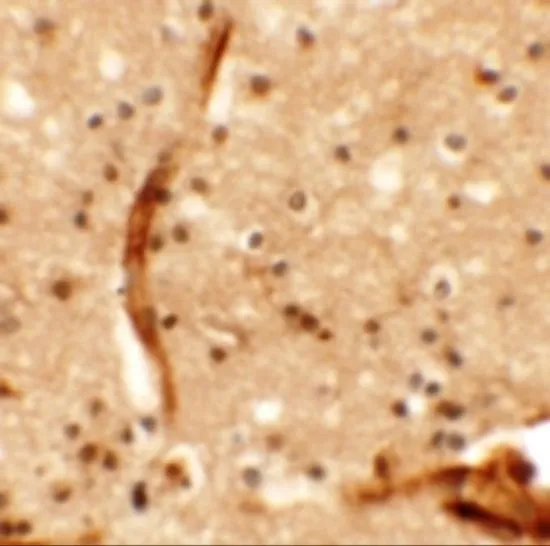
IHC-P analysis of human brain tissue using GTX31448 KCNK13 antibody. Working concentration : 5 microg/ml
KCNK13 antibody
GTX31448
ApplicationsWestern Blot, ELISA, ImmunoHistoChemistry, ImmunoHistoChemistry Paraffin
Product group Antibodies
TargetKCNK13
Overview
- SupplierGeneTex
- Product NameKCNK13 antibody
- Delivery Days Customer9
- Application Supplier NoteWB: 0.5 microg/mL. IHC-P: 5 microg/mL. *Optimal dilutions/concentrations should be determined by the researcher.Not tested in other applications.
- ApplicationsWestern Blot, ELISA, ImmunoHistoChemistry, ImmunoHistoChemistry Paraffin
- CertificationResearch Use Only
- ClonalityPolyclonal
- Concentration1 mg/ml
- ConjugateUnconjugated
- Gene ID56659
- Target nameKCNK13
- Target descriptionpotassium two pore domain channel subfamily K member 13
- Target synonymsK2p13.1, THIK-1, THIK1, potassium channel subfamily K member 13, K2P13.1 potassium channel, potassium channel, subfamily K, member 13, potassium channel, two pore domain subfamily K, member 13, tandem pore domain halothane-inhibited potassium channel 1, tandem pore domain potassium channel THIK-1
- HostRabbit
- IsotypeIgG
- Protein IDQ9HB14
- Protein NamePotassium channel subfamily K member 13
- Scientific DescriptionThis gene encodes one of the members of the superfamily of potassium channel proteins containing two pore-forming domains. The product of this gene is an open channel that can be stimulated by arachidonic acid. [provided by RefSeq, Jul 2008]
- Storage Instruction-20°C or -80°C,2°C to 8°C
- UNSPSC12352203

